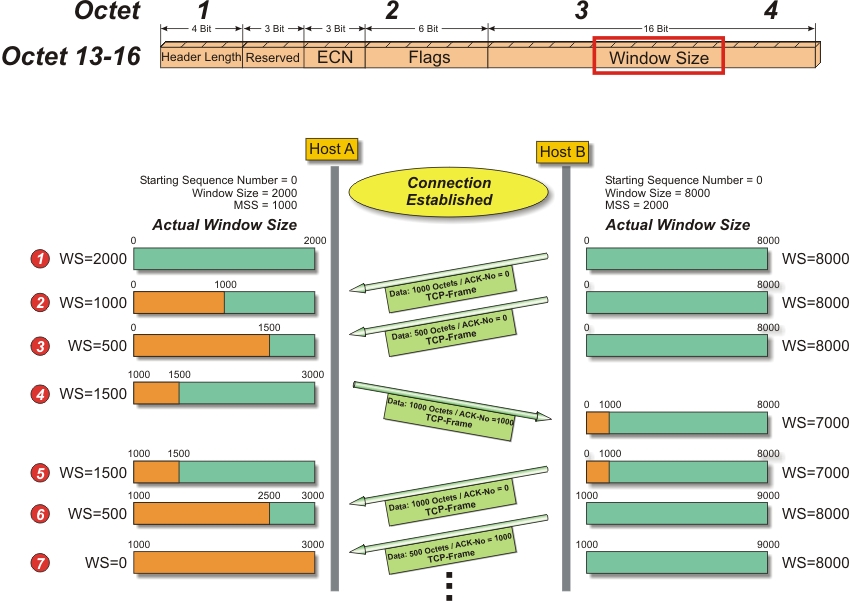



It is analogous to a telephone conversation someone initiates it by ringing a number which is answered, a two-way conversation takes place, and finally someone ends the conversation. The term virtual circuit is usually used to refer to the handshaking that goes on between the two end machines, most of which are simple acknowledgment messages (either confirmation of receipt or a failure code) and datagram sequence numbers. This makes sense, because on a gateway the datagram has no need to go higher in the layered model than the IP layer.įigure 1: TCP providing reliable End-to-End communicationīecause TCP is a connection-oriented protocol responsible for ensuring the transfer of a datagram from the source to destination machine (end-to-end communications), TCP must receive communications messages from the destination machine to acknowledge receipt of the datagram. It does not reside on a device that simply routes datagrams, so there is no TCP layer in a gateway. TCP resides only on devices that actually process datagrams, ensuring that the datagram has gone from the source to target machines. TCP resides in the transport layer, positioned above IP but below the upper layers and their applications, as shown in the Figure below. Without the TCP layer, each application would have to implement the services themselves, which is a waste of resources. The isolation of these services in a separate layer enables applications to be designed without regard to flow control or message reliability. TCP also must maintain a state table of all data streams in and out of the TCP layer. TCP must be capable of handling the termination of an application above it that was expecting incoming datagrams, as well as failures in the lower layers. It has to ensure that priorities and security are respected. TCP manages the flow of datagrams from the higher layers, as well as incoming datagrams from the IP layer. If a datagram is corrupted or lost, it is usually TCP (not the applications in the higher layers) that handles the retransmission. In this role, TCP acts as a message-validation protocol providing reliable communications. Most importantly, it provides a connection-oriented protocol to the upper layers that enable an application to be sure that a datagram sent out over the network was received in its entirety. The Transmission Control Protocol provides a considerable number of services to the IP layer and the upper layers. Most users think of TCP and IP as a tightly knit pair, but TCP can be, and frequently is, used with other transport protocols.įor example, TCP or parts of it are used in the File Transfer Protocol (FTP) and the Simple Mail Transfer Protocol (SMTP), both of which do not use IP. The task of ascertaining the status of the datagrams sent over a network and handling the resending of information if parts have been discarded falls to TCP. IP simply handles the routing of datagrams and if problems occur, IP discards the packet without a second thought, generating an error message back to the sender in the process. The IP layer delivers the datagram hop-by-hop and does not guarantee delivery of a datagram it is a connectionless system. In fact all the layers below TCP are unreliable and deliver the datagram hop-by-hop. Why use a transport layer which is as complex as TCP? The most important reason depends on IP's unreliability.
#Checksum calculator destination port length software#
In theory, a transport layer protocol could be a very simple software routine, but the TCP protocol cannot be called simple. This section will end with a comparison between UDP and TCP followed by a nice exercise which would encourage readers to solve more and more problems.īefore writing this section, the information has been studied from varied sources like TCP guide, RFC's, tanenbaum book and the class notes. This section will help the reader to get to know about the concepts and characteristics of the TCP, and then gradually dive into the details of TCP like connection establishment/closing, communication in TCP and why the TCP protocol is called a reliable as well as an adaptive protocol. Connection-Oriented vs Connectionless TCPĪfter going through the various layers of the Model, it’s time to have a look at the TCP protocol and to study its functionality. Where TCP is a connection oriented protocol and UDP is a connectionless protocol. In the OSI model, TCP and UDP are "Transport Layer" Protocols. This page will talk about what TCP and UDP are, and what the differences are between them. The TCP and UDP protocols are two different protocols that handle data communications between terminals in an IP network (the Internet). A Wikibookian has nominated this page for cleanup.


 0 kommentar(er)
0 kommentar(er)
